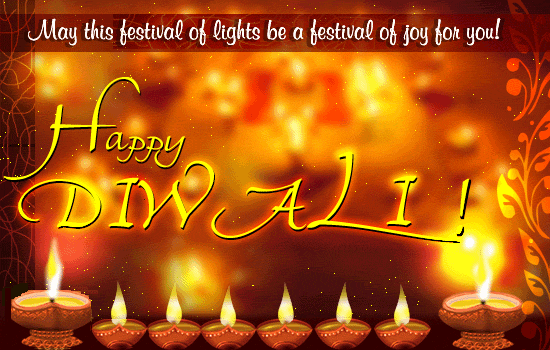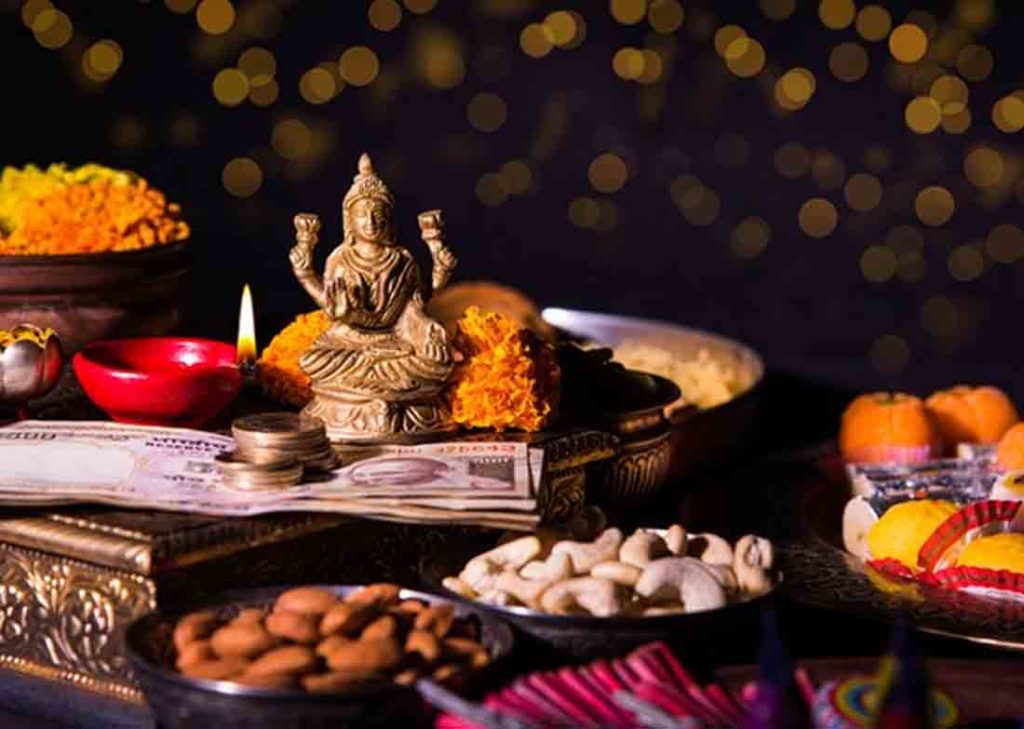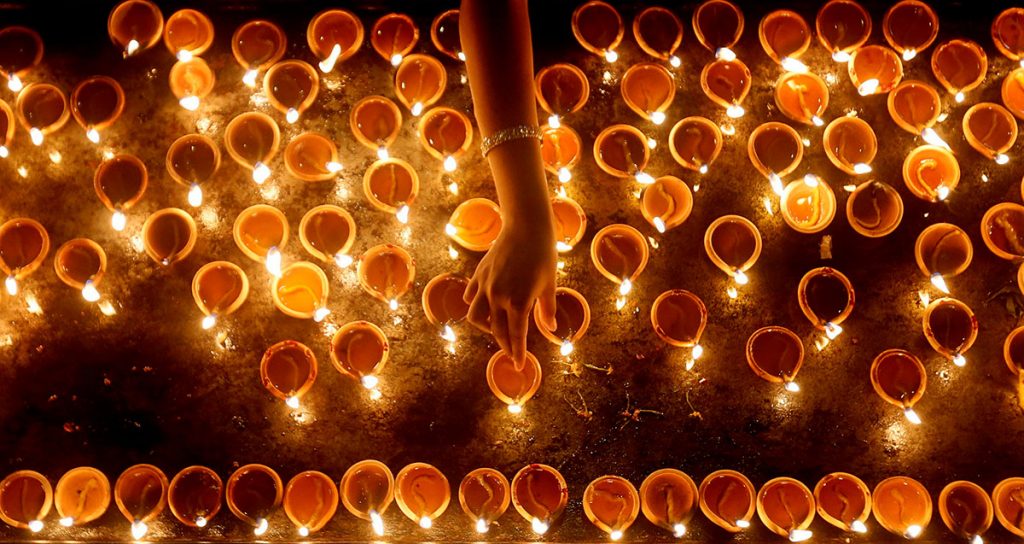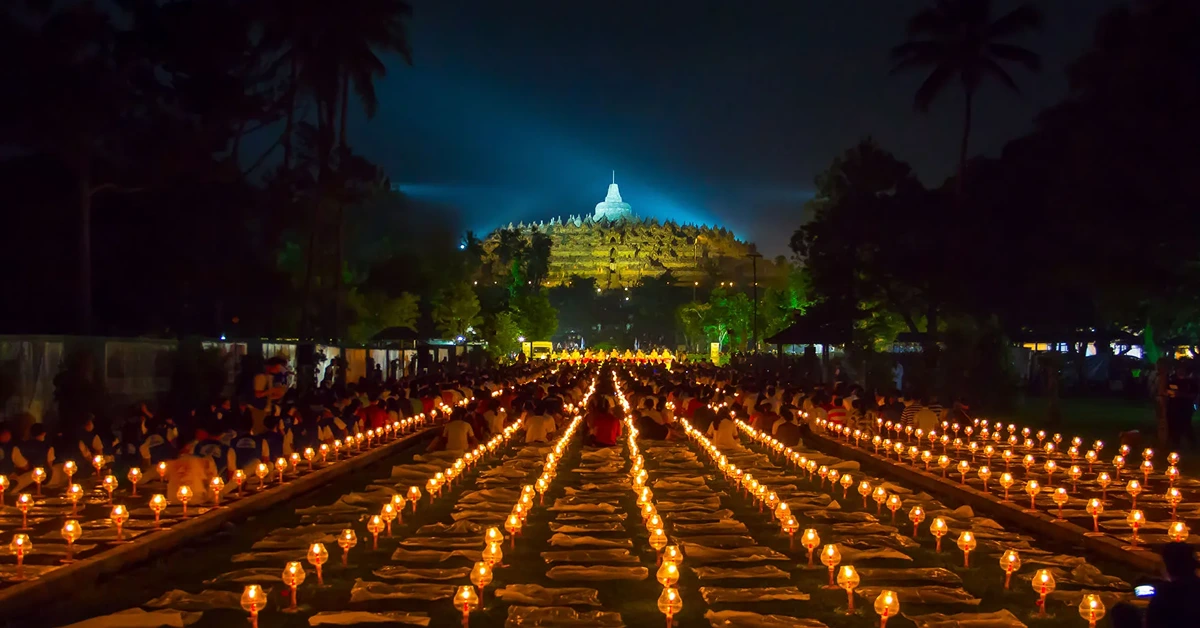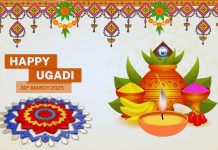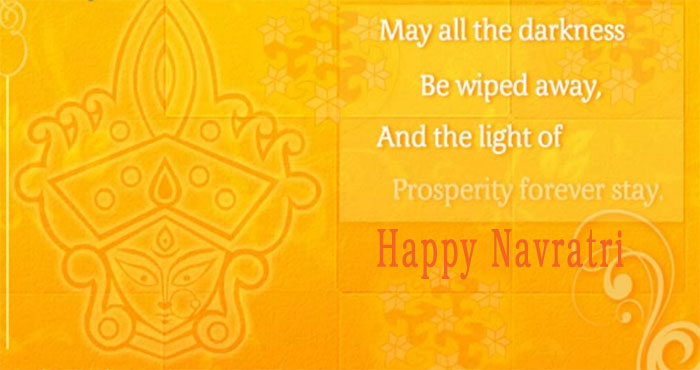|
| What is Diwali | Origin | Celebrations | Legend | Menu | |
|
The First day of Diwali : Dhanteras
The First day is called Dhanteras or Dhantryaodashi, which falls on the thirteenth day of the month of Ashwin. Lakshmi – the Goddess of wealth – is worshiped to provide prosperity and well being. It is also the day for celebrating wealth, as the word ‘Dhan’ literally means wealth and ‘Tera’ comes from the date 13th. This day is also known as ‘Dhanatrayodashi’ as on this day Goddess Lakshmi came out of the ocean during the churning of the Milky Sea. In the evening, the lamp is lit and Dhan-Lakshmi is welcomed into the house. Alpana or Rangoli designs are drawn on pathways including the goddess’ footprints to mark the arrival of Lakshmi. Aartis or devotional hymns are sung eulogizing Goddess Lakshmi and sweets and fruits are offered to her. Hindus also worship Lord Kuber as the treasurer of wealth and bestower of riches, along with Goddess Lakshmi on Dhanteras. This custom of worshiping Lakshmi and Kuber together is in prospect of doubling the benefits of such prayers. People flock to the jewelers and buy gold or silver jewelry or utensils to venerate the occasion of Dhanteras. Many wear new clothes and wear jewelry as they light the first lamp of Diwali. |
|
The Second day of Diwali : Narak Chaturdasi
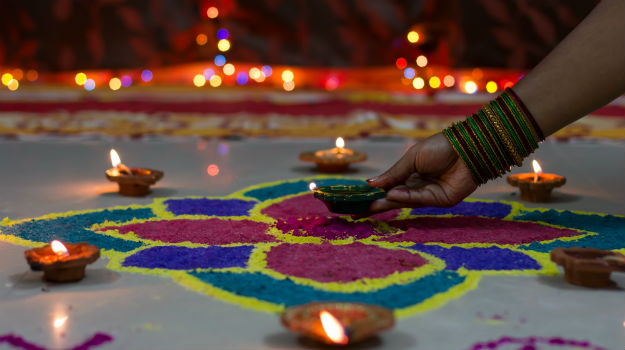 It is the fourteenth lunar day (thithi) of the dark fortnight of the month of Kartik and the eve of Diwali. Narakasur was a demon who forced beautiful women to live with him. On this day Lord Krishna destroyed the demon Narakasur and made the world free from fear. Other than that, he would also bath in oils to remove blood residue after killing the demon. Which is why worshippers would cover themselves with oil before taking a bath. Cleaning the body with aromatic oils on this day is meant to purify the body. As for the princesses, he married all 16, 000 of them, so no one would question their chastity. This act symbolizes that he wanted to take care of his people and offer them protection. Rice is also used to create Rangoli patterns the day before. |
|
The third day : Diwali
On the dark new moon night, the entrances to all homes are lit up and decorated with rangoli patterns to welcome Lakshmi, the radiant consort of Vishnu and the goddess of wealth and lustre. Lakshmi Puja is performed on this day. Diwali is the last day of financial year in traditional Hindu business and businessmen perform Chopda Pujan on this day on the new books of accounts. Diwali is the festival when the new business year begins it is said that Diwali is the “Time to shop or start new ventures”. |
|
The fourth day : New Year day or Bestavarsh
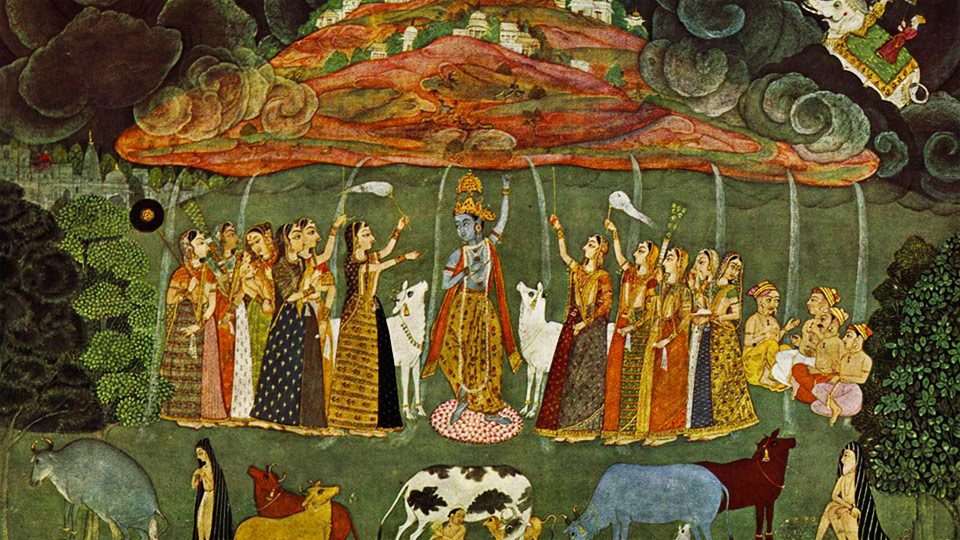 The Fourth day is called Padwa or VarshaPratipada that marks the coronation of King Vikramaditya and Vikaram-Samvat was started from this Padwa day.
The day after the Lakshmi Puja, most families celebrate the new year by dressing in new clothes, wearing jewellery and visiting family members and business colleagues to give them sweets, dry fruits and gifts. On this day, Goverdhan Pooja is performed. As per Vishnu-Puran, the people of Gokul used to celebrate a festival in honour of Lord Indra and worshipped him after the end of every monsoon season. But one particular year the young Krishna stopped them from offering prayers to Lord Indra who in terrific anger sent a deluge to submerge Gokul. But Krishna saved his Gokul by lifting up the Govardhan Mountain and holding it over the people as an umbrella. This incident is also what prompted Hindus to become more humble in the face of the divine. Alternatively, this day is also observed as Annakoot and prayers are offered in the temples. In temples especially in Mathura and Nathadwara, the deities are given milkbath, dressed in shining attires with ornaments of dazzling diamonds, pearls, rubies and other precious stones. |
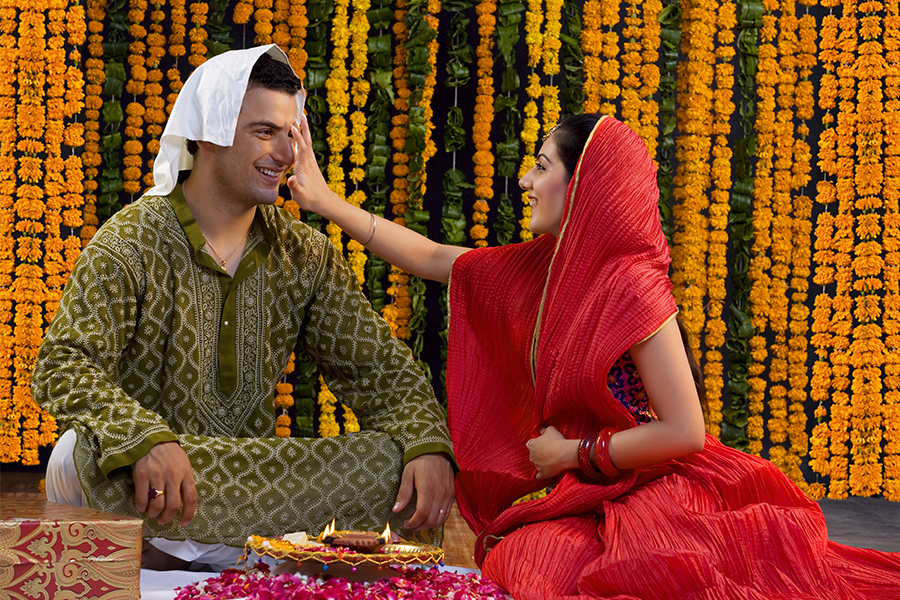 The second day of the bright forthnight (Shukla Paksh) of Kartik is called “Bhaiya-Duj“. It comes once a year – after Diwali. The name itself denotes the day of the festival i.e.Diwali falls on the absolutely dark night of Amdvasya (new moon), Dooj comes two days after Diwali. Many years ago, in the Vedic era, Yama (Yamraj, the Lord of death) visited His sister Yamuna(Yami) and she put the auspicious tilak on his forehead, they ate talked and enjoyed together and exchanged special gifts as a token of their love for each other and Yamraj announced that anyone who receives tilak from his sister on this day will never be thrown. It is a day dedicated to sisters. We have heard about Raksha Bandhan (brothers day). Well this is sisters day. Since then it has became imperative for the brother to go to his sister’s house to celebrate Bhaiyaduj.On Bhai Dooj, the teeka is applied on the brother’s forehead. Brothers would also usually offer gifts to sisters in the form of previous jewels and jewellery. This act is a symbolism of respect and an offer of protection. In the past, this is done so that their sisters would be protected from destitution if a husband or father dies. The sister usually goes in the morning and does the puja in the mother’s house, before the brothers leave for their places of study or work. |
|
Some Beliefs about Diwali |
|
Why do people clean and decorate their homes for Diwali?
Diwali is considered to be the festival of the Goddess wealth and prosperity Laxmi – Goddess Laxmi visits all homes to bless the people and so to welcome the goddess homes are cleaned & decorated. Why do people Light up their homes with clay oil lamps?
People light up their homes to welcome Goddess Laxmi. Clay lamps also indicates the victory of Light over Darkness, Good over Evil, as well as the victory of Truth over Falsehood and that man can succeed only through his virtues.
Why do people play cards on Diwali? |


